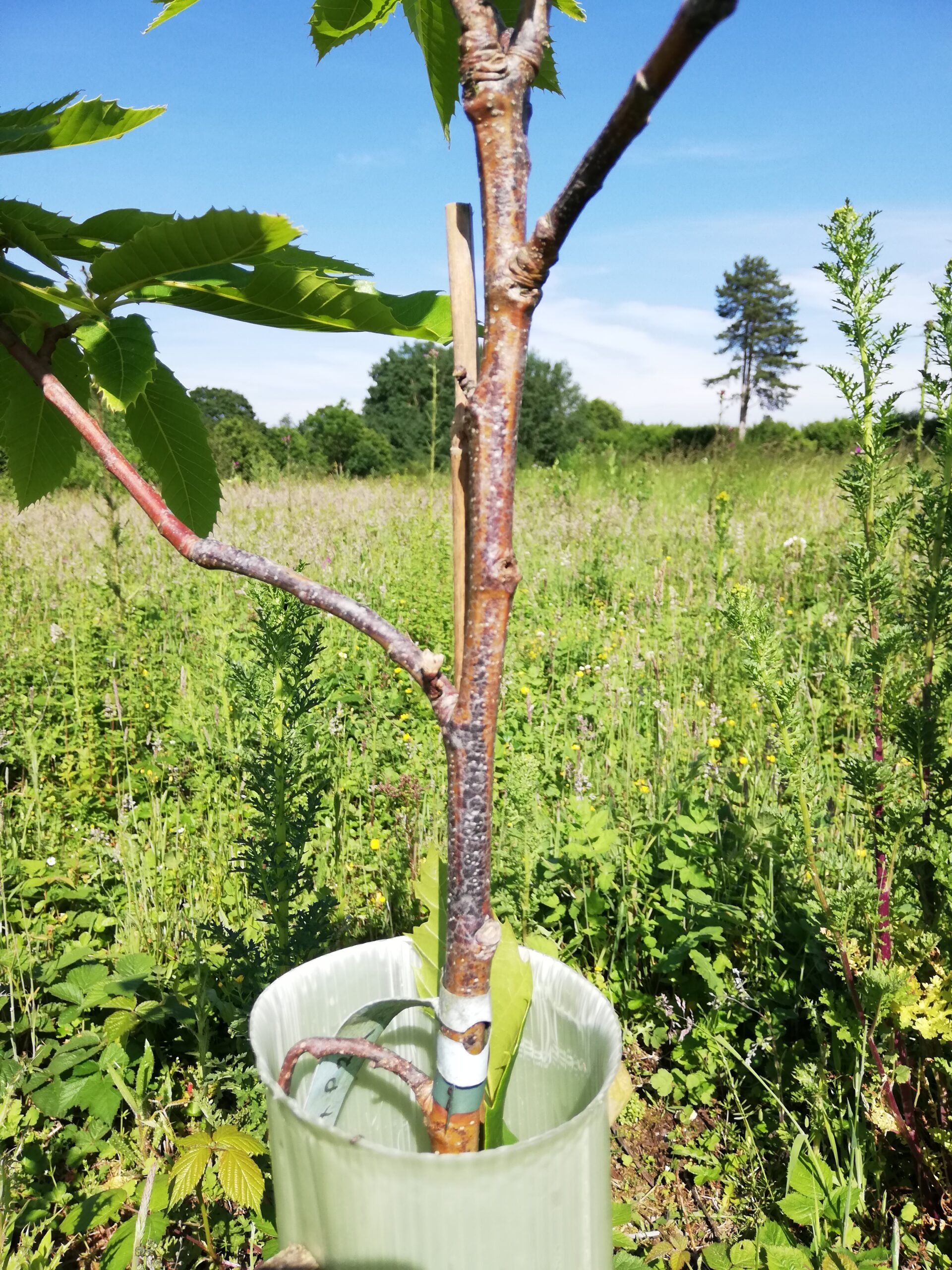Sweet Chestnut – The presence of microorganism; Gnomoniopsis smithogilvyi, an update by Dr Joe Beesley, Researcher, Future Trees Trust for National Plant Health Week
Sweet chestnut (Castanea sativa) is a fast-growing broadleaved species that produces durable and rot-resistant timber. Future Trees Trust have selected plus trees from woodlands across the southern half of Britain and Ireland. With grafts from these trees, two large and diverse seed orchards have been established in Kent and Co, Waterford which are due to begin producing seed in 5 – 10 years. A clonal archive site containing a large number of our selected plus trees is also planted in Herefordshire.
Last year we noticed unusual symptoms on a number of our smaller grafted trees at the UK orchard and the archive. The trees had streaked red and brown lesions along the stem and were dying back severely. Larger trees seemed to not be so badly affected.
An officer from the Forestry Commission’s Plant Health Team visited the archive site and collected samples from these stricken trees. The results confirmed the presence of a microorganism called Gnomoniopsis smithogilvyi, a fungal pathogen first detected in the UK in 2016 but which has likely been in the country for longer.
Gnomoniopsis has been shown to cause cankers and nut rot in several other European countries while one study suggested the fungus was an endophyte – an organism that lives, and therefore is always present, within the tissue of sweet chestnut. The presence of a fungus that causes nut rot in a seed orchard is of particular concern. Unfortunately, very little is known about the cause or spread of Gnomoniopsis in sweet chestnut. It is notable that the trees with worst symptoms are smaller trees that are already stressed due to other factors, and the fungus could well be an opportunist. As larger trees have not been so badly effected and are growing well, the pathogens presence is currently considered to pose a low risk to the UK.
As the only UK charity dedicated to the improvement of broadleaf trees and as sweet chestnut is one of our important species, we will continue to monitor our sites for progression of the observed symptoms and hope to work with other organisations to better understand Gnomoniopsis and the management options that may help to control its spread.
If you would like to support our future work please get in touch.


Leave A Comment